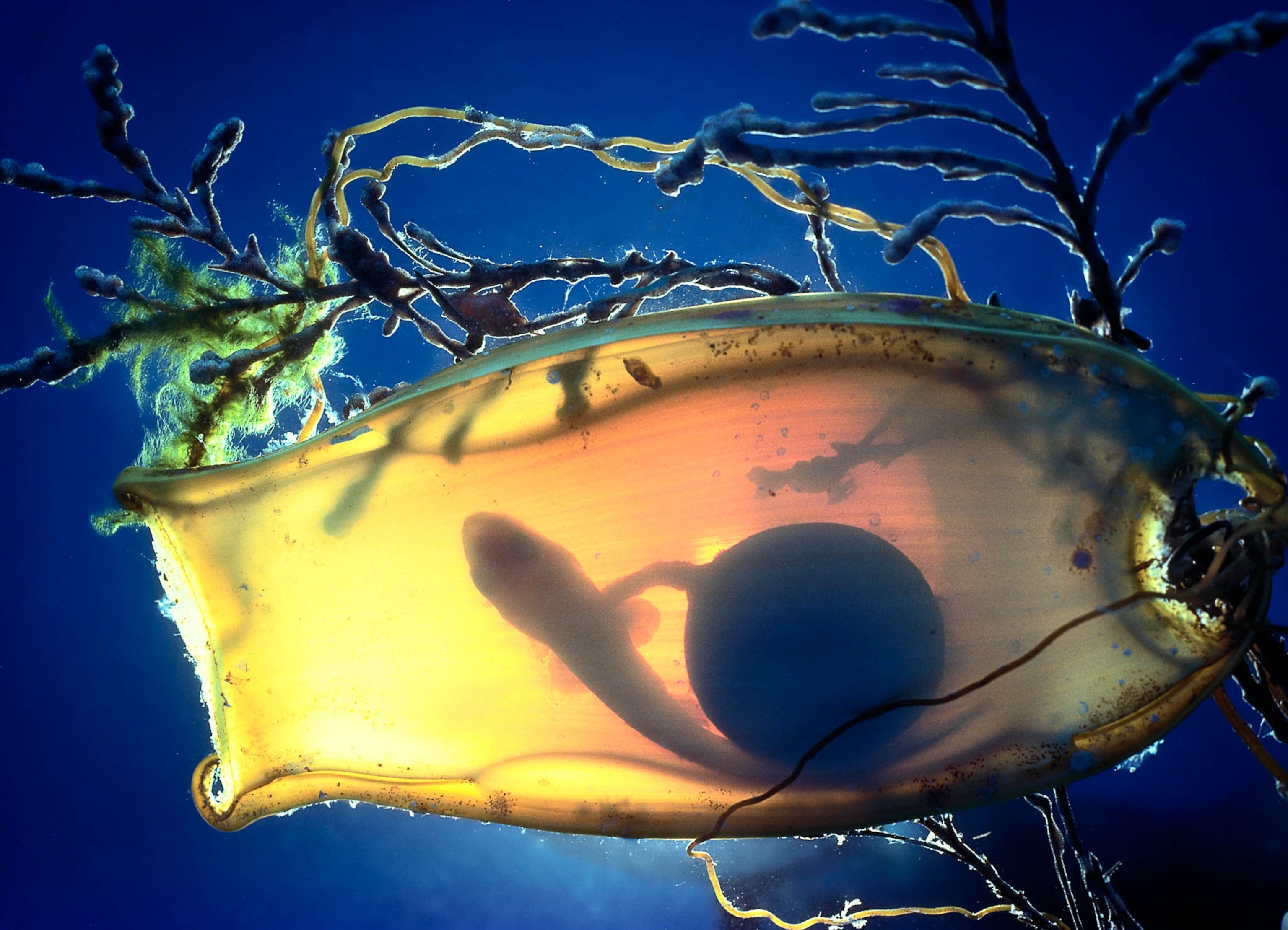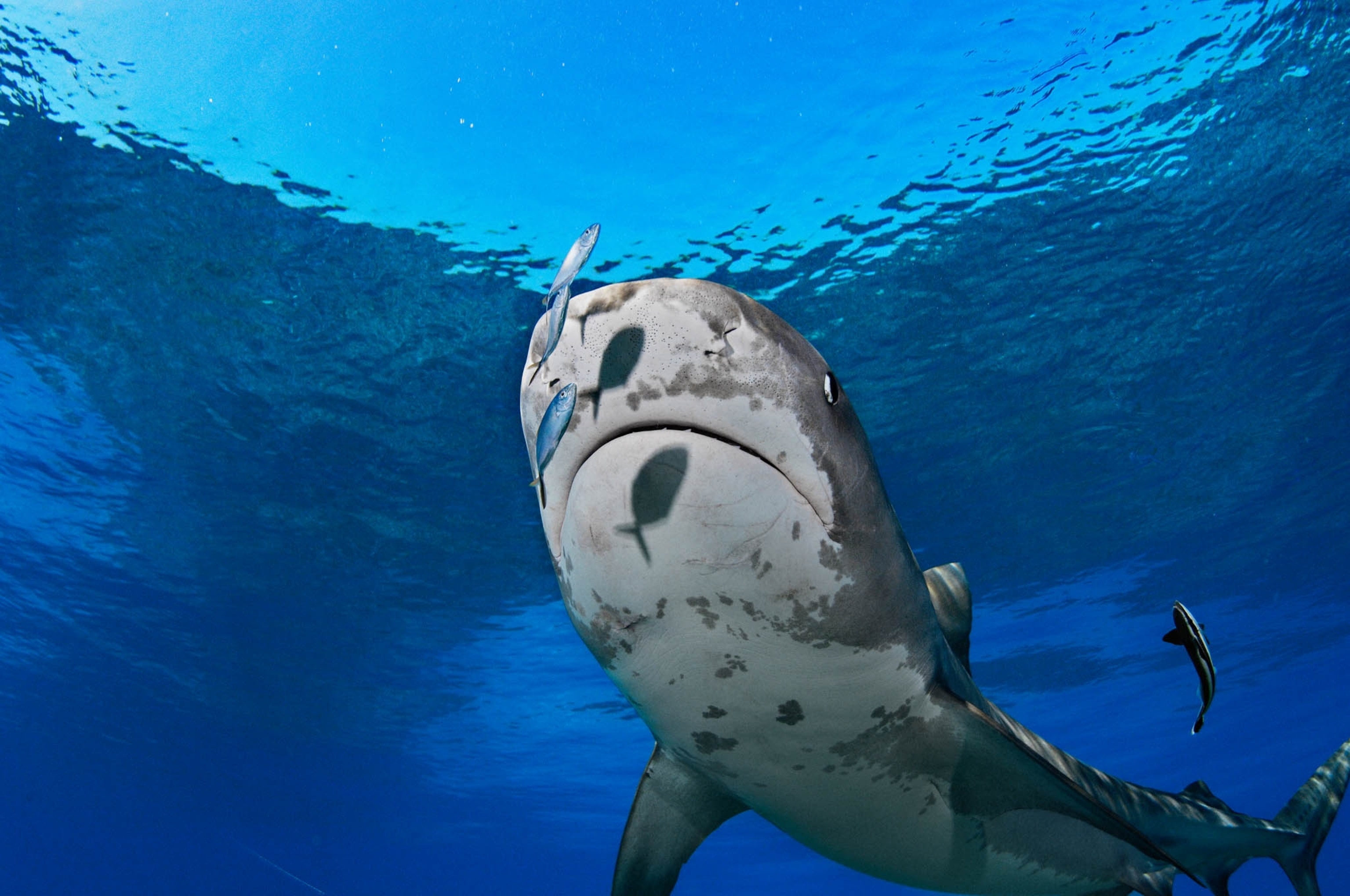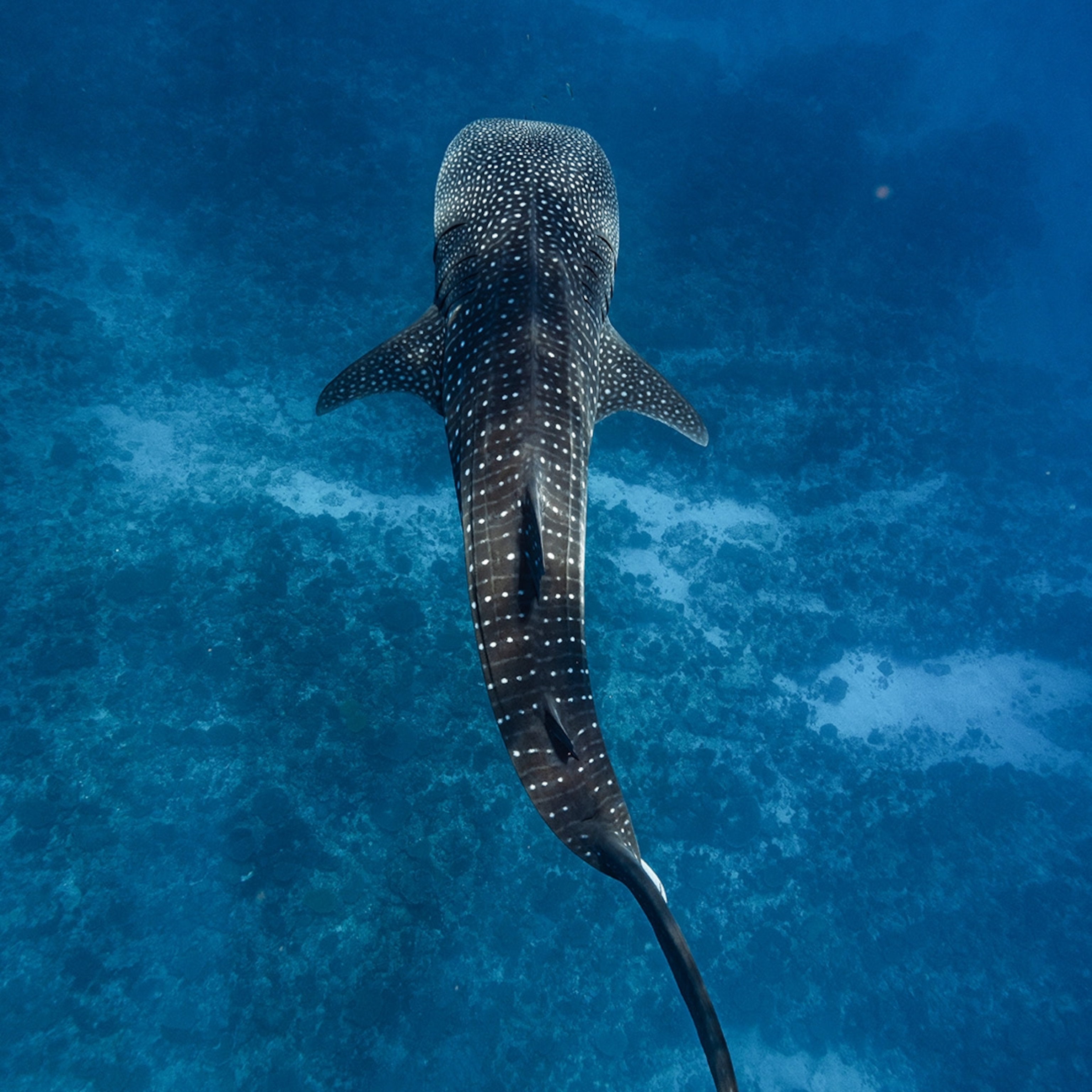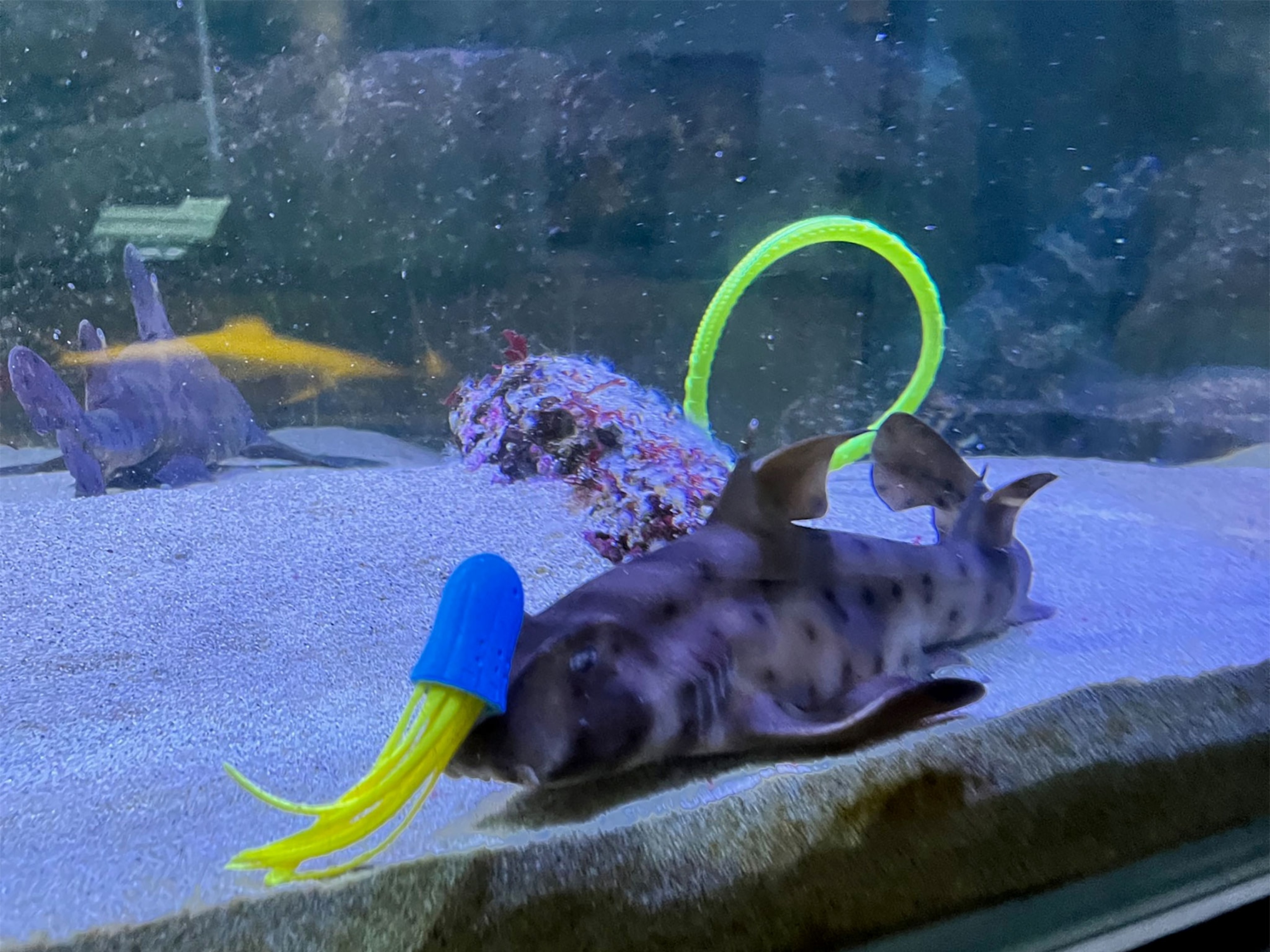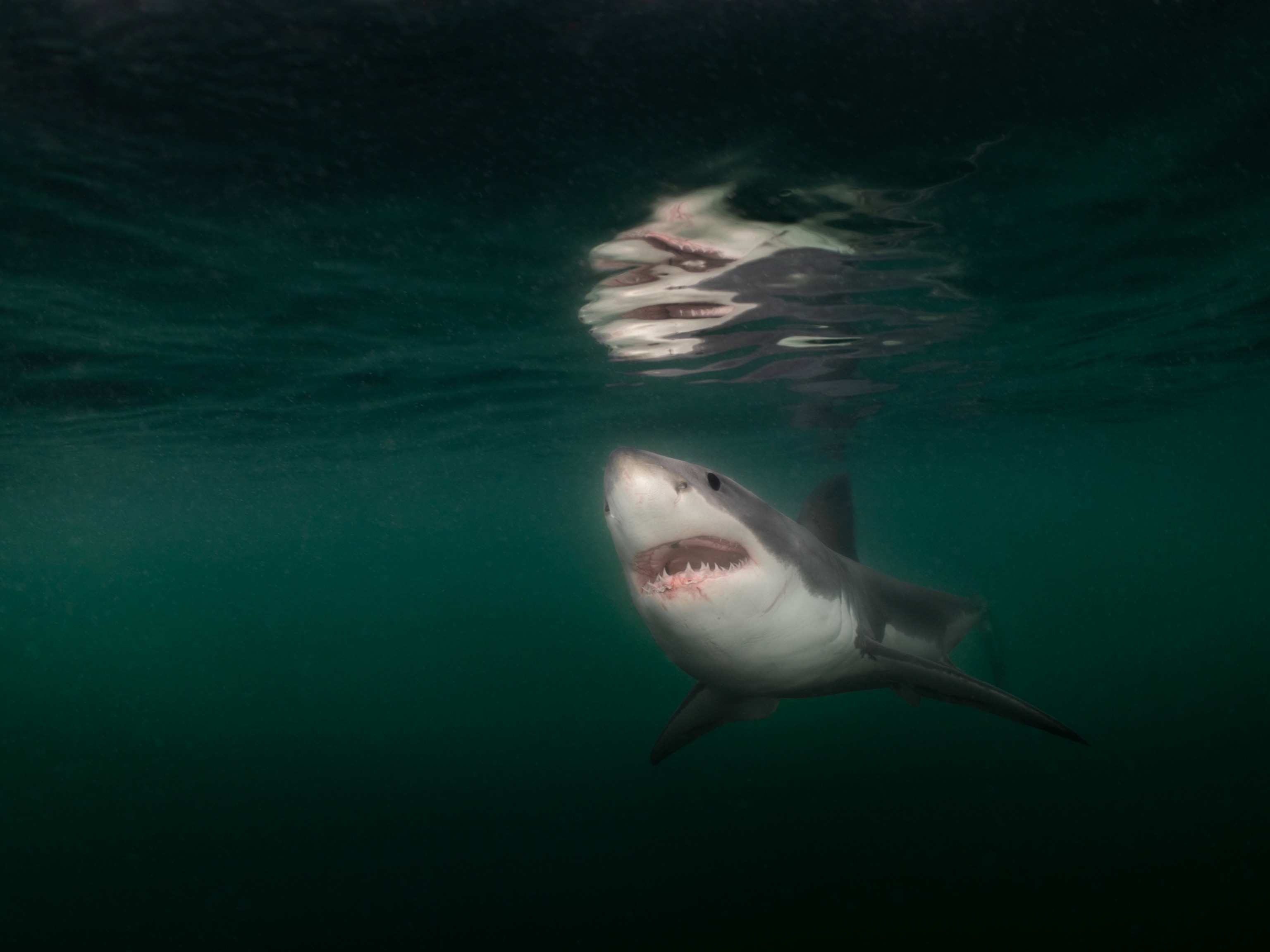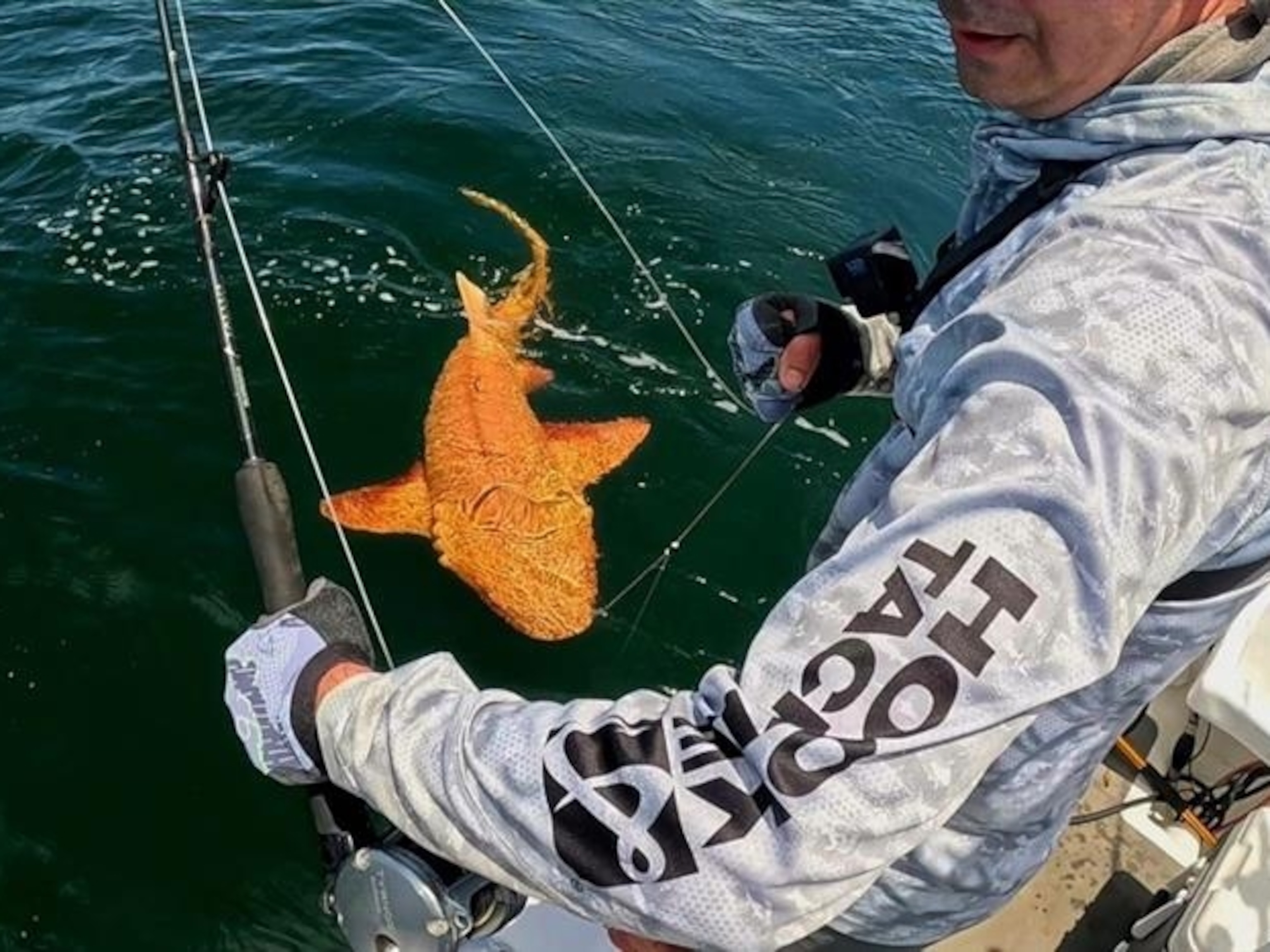In Open Water, a new movie about a scuba-diving couple that is mistakenly abandoned in the middle of the ocean, the school of menacing sharks is real.
"We thought we would have to swim with two or three sharks," said Daniel Travis, who plays one half of the stranded couple. "But when we showed up for filming there were about 45 or 50 of them."
The movie, which opens in limited release on August 6, is unlikely to change the stereotype of sharks as vicious killers. But it's a more realistic portrayal of sharks than the usual Hollywood fare.
"It was important to work with real sharks, to get the way their tails flap around like big rats in the water as opposed to the usual Hollywood fin gliding smoothly on the surface," said Chris Kentis, the film's director.
Stranded
Kentis's screenplay was loosely based on the true story of Americans Tom and Eileen Lonergan, who were stranded in the ocean off Cairns in Australia six years ago. The operators of their tour boat had miscounted the number of divers on board and set off without the couple.
The boat's crew only realized its mistake two days later, when they found some of the Lonergans' property on board. Despite a widespread search by the police and the Australian Navy, the Lonergans were never found.
Although rare, other such incidents of divers being left behind in the open ocean have happened. Even Kentis and his wife Laura Lau, both experienced divers, once found themselves temporarily abandoned by their dive boat during a diving excursion.
"The fear of being left in the open water is an extremely frightening feeling," said Kentis, whose wife produced and co-shot the movie. "We were both attracted to the simplicity of that story."
10 Chilling Photos of Sharks
Working on a meager U.S. $120,000 budget, the husband-and-wife team filmed Open Water on weekends and holidays for three years off the coast of Bahamas. They shot more than 120 hours of footage.
Travis and his co-star Blanchard Ryan are both certified scuba divers. While filming, they wore protective chain mail under their wetsuits. Ryan says she was terrified to get in the water with the sharks, a fear that never really left her.
"But they are amazing and beautiful creatures," she said.
The tiny crew worked with a local shark expert, who introduced the team to a population of mostly gray reef sharks and a few bull sharks that were used to divers.
To manipulate the sharks' movement, the filmmakers would throw chunks of bloody tuna into the water, which would get the sharks worked up. Lau shot from a platform on the boat, her legs dangling in the water as the sharks frenzied below, while her husband shot most of the in-water footage.
"I'd be getting bumped constantly," Kentis said. "There were times I'd look down, there would just be gray, no blue."
Killing Machines
The filmmakers stress that Open Water is not a "shark movie," an argument that is not entirely convincing, considering that at least one of the movie posters shows a large shark fin circling around the terrified diving couple.
Shark experts charge that sharks are unfairly portrayed in the media as aggressive hunters of humans. In reality, there were just 55 confirmed unprovoked shark attacks worldwide in 2003—only four of them fatal—according to the International Shark Attack File, a Florida-based organization that tracks human-shark interaction. By contrast, 44 people were killed by lightning in the United States last year, according to the U.S. National Weather Service.
"The media and movies like Jaws often present sharks as mindless killing machines," said Mike Heithaus, a marine biology professor at Florida International University in Miami and one of the world's leading shark scientists. "But that's not what they are. They're just perfectly adapted predators.
"It seems [the filmmakers] were able to make this movie because the sharks they worked with aren't prone to attack," Heithaus added.
Kentis says he tried to not depict the sharks as demons.
"We didn't want to show that as soon as people get in the water, the sharks rip them to shreds," he said. "In the movie, the divers are in the water for hours before [coming in contact with] the sharks."
Related: More Photos of Sharks
The filmmakers are also reluctant to divulge the exact location of where they filmed, for fear of jeopardizing the tourist trade there.
"We didn't want to get anyone in trouble," Lau said. "We didn't want to say, If you go there, this is what's going to happen.'"
Lau says the film is really about human fragility.
"We think we own this world and that we can do whatever we want, that the Earth is at our disposal," she said. "That's not the case. We forget how insignificant we are in the force of nature."
So will the actors go back to diving with the sharks?
"Absolutely," Travis said.
Ryan, though, is not so sure. "I think I'll stick to the swimming pool," she said.



